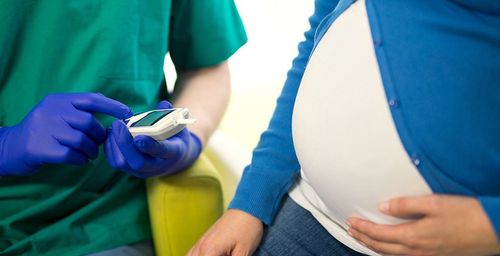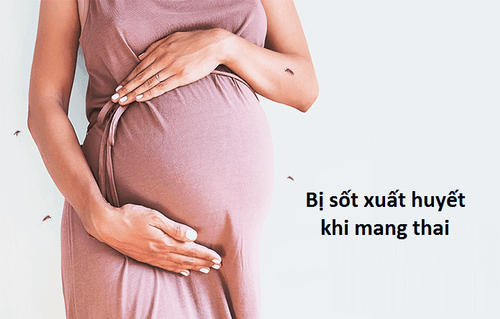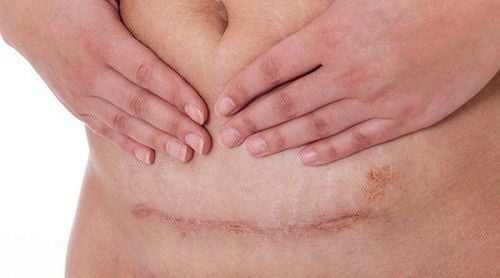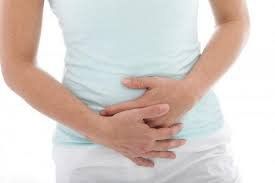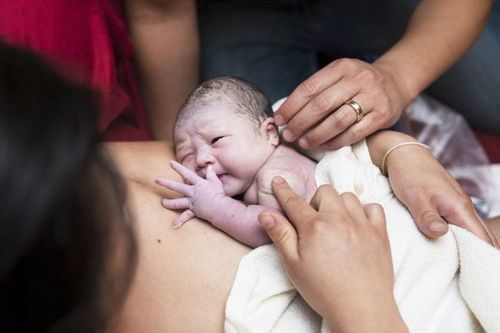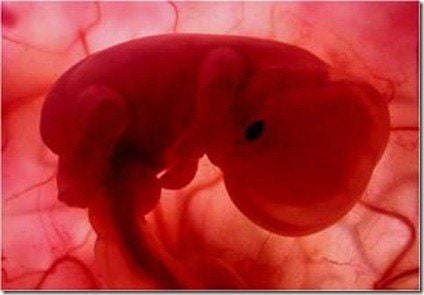This is an automatically translated article.
The article was professionally consulted by Specialist Doctor I Le Thi Phuong - Department of Obstetrics and Gynecology - Vinmec Ha Long International Hospital. Dr. Le Thi Phuong has 29 years of experience in the field of obstetrics and gynecology.Postpartum hemorrhage in women is the leading cause of obstetric death. Postpartum haemorrhage occurs in more than 10% of births, and 25% of maternal deaths are due to severe postpartum haemorrhage.
1. How dangerous is postpartum haemorrhage?
Various forms of intervention have been proposed by the International Federation of Midwives (ICM), the International Federation of Obstetricians and Gynecologists (FIGO), and the World Health Organization (WHO) for the active management of periodontal disease. third stage of labor (placental delivery), which includes administering uterotonics immediately after delivery, early cord clamping, and controlled cord traction to deliver placenta, in lieu of follow-up management (waiting and waiting). wait) no intervention, wait for spontaneous detachment, delayed cord clamping.
Currently, another possible cause of postpartum haemorrhage, although rare, is Traction due to pulling the umbilical cord too hard during the delivery of the placenta. However, most women with postpartum haemorrhage have no prior risk factors.
2. Recommendations of the World Health Organization for the prevention of postpartum haemorrhage
Use of uterotonics to prevent postpartum haemorrhage in the third stage of labor is recommended for all births. Oxytocin (10 IU can be given intravenously or intramuscularly) is a uterotonic that is recommended for the prevention of postpartum haemorrhage. In settings where oxytocin is not available, injectable inotropes (ergometrine/methylergometrine or a fixed combination of oxytocin and ergometrine) or oral misoprostol (600 mg) should be used. In settings without trained birth attendants and where oxytocin is not readily available, administration of Misoprostol (600 μg) by public health personnel is recommended for the prevention of postpartum haemorrhage. . In medical facilities with trained medical personnel, controlled umbilical cord traction is performed during vaginal delivery if essential to minimize blood loss and minimize the time it takes to give birth. the third stage of labor. In medical facilities without trained medical staff, the umbilical cord traction procedure is not recommended.

Late umbilical cord clamping (1-3 min postpartum) is recommended for all births while postnatal care is still being performed Early umbilical cord clamping (before 1 min postpartum) is not recommended, except in cases of asphyxia and need immediate resuscitation. Maintenance of uterine massage is not considered an intervention to prevent postpartum haemorrhage in women who have received prophylactic oxytocin injections. Monitor uterine contractions for early detection of uterine atony for all postpartum women. Uterine massage is not recommended for the prevention of postpartum haemorrhage when oxytocin has been administered to a woman. Oxytocin (intravenous or intramuscular) is a uterotonic that is recommended for the prevention of bleeding after a cesarean section. A controlled umbilical cord traction procedure is recommended to remove the placenta from the uterus during a cesarean section.
3. Recommendations of the World Health Organization for the management of postpartum haemorrhage
Intravenous oxytocin is the first-line uterotonic recommended for the treatment of postpartum haemorrhage. If an oxytocin line is not available or bleeding is unresponsive to oxytocin therapy, intravenous ergometrine, oxytocin-ergometrine combination, or prostaglandins (including 800 mg sublingual misoprostol) are recommended. Isotonic solutions should be given preference before colloidal solutions are used in the initial resuscitation of women with postpartum haemorrhage. Tranexamic acid should be used to treat postpartum haemorrhage if oxytocin and other inotropes fail to stop bleeding or if traumatic bleeding is suspected. Uterine massage is recommended for the treatment of postpartum haemorrhage. If the woman is unresponsive to treatment with uterotonics or is not readily available, the use of an intrauterine balloon is recommended for the treatment of postpartum haemorrhage due to uterine atony. If other measures fail and if possible, the use of uterine artery embolization may be recommended as a treatment for postpartum haemorrhage due to uterine atony. If bleeding does not stop despite treatment with uterotonics and procedural interventions (eg, uterine massage, endometrium balloon), surgical intervention is recommended in these cases. this case. Bilateral uterine compression is recommended as a temporary use for compression pending other appropriate management of postpartum haemorrhage due to uterine atony after vaginal delivery. External aortic blockade for the treatment of postpartum haemorrhage due to uterine atony after delivery is usually recommended as a temporary measure until other appropriate treatment is available. Wearing a non-inflatable shockproof vest is recommended as a temporary measure until appropriate care is taken. The use of uterine tampons is not recommended for the treatment of postpartum haemorrhage due to uterine atony after vaginal delivery. If the placenta does not abort spontaneously, administering Oxytocin 10UI intravenously and in combination with controlled cord traction is recommended. The use of ergometrine in bleeding due to retained placenta is not recommended because it can cause uterine contractions causing the placenta to be retained in the uterine cavity. Prostaglandin E2 alpha (dinoprostone or sulprostone) should not be used in bleeding due to retained placenta. Single-dose antibiotics (ampicillin or first-generation cephalosporins) should be used in cases of artificial placental detachment.4. World Health Organization recommendations for postpartum haemorrhage care

Please dial HOTLINE for more information or register for an appointment HERE. Download MyVinmec app to make appointments faster and to manage your bookings easily.
Articles refer to the source: Aafp.org, app.who.int




